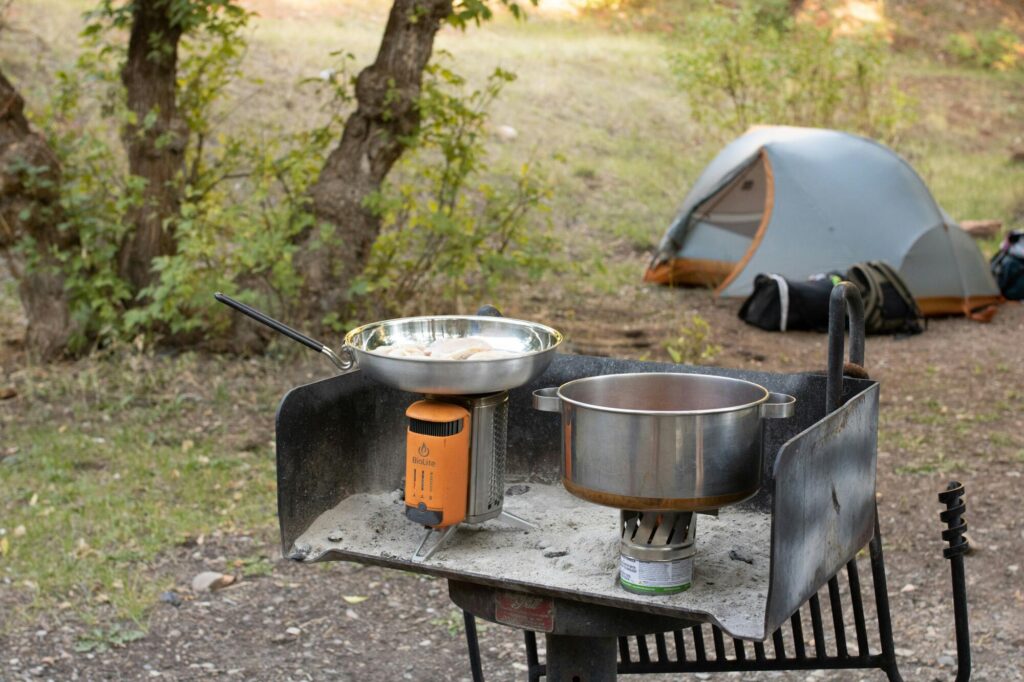Have you ever wondered what makes a compact stove the right choice for outdoor adventures? With so many models and features available, finding the perfect fit can feel overwhelming. Outdoor cooking requires more than just heat-it needs efficiency, portability, and reliability.
Whether it’s a weekend camping trip or a long backpacking journey, the right stove can transform the experience. Picking the wrong one may lead to wasted fuel or a heavy pack. Careful consideration of your needs is essential.
This guide will show exactly how to choose the perfect compact stove for outdoor needs. Read on!
Understanding Different Types of Compact Stoves
Many kinds of small stoves are available, and each one is made to meet specific needs when used outside. Hikers love canister stoves because they are small, light, and easy to use.
This type of stove works better in cold weather and on long trips. Multi-fuel stoves are useful because they can use different kinds of fuel. Solid fuel stoves are easy to use and don’t need big fuel containers.
Since wood-burning stoves use natural fuel, you don’t have to bring as many extra supplies. There are pros and cons to each type that affect how well it works. To make a smart choice, you need to know where and how you will use the stove.
Considering the Weight and Size of the Stove
How useful a small stove is on long trips depends a lot on how heavy it is. Design that is light and won’t add stress is often what backpackers look for.
But ultralight models sometimes give up stability or cooking power. When packing for a small space, size is also important. A small stove shouldn’t take up too much space in your backpack.
Bigger stoves might be better for cooking with a lot of people, but they can be harder to move around. Getting the right balance ensures that you are productive without being uncomfortable. A small stove should be light and able to cook food.
Fuel Availability and Efficiency
Fuel type determines both performance and convenience in outdoor cooking. Canister fuels are easy to find but may not always be available in remote areas. Liquid fuel options are reliable in more rugged conditions.
Solid fuels are lightweight but may burn less efficiently. Wood-burning stoves cut down on packing fuel but depend on local resources. Efficiency is key since more efficient stoves require less fuel overall.
This means less weight and more room for other essentials. Always check fuel availability before heading to a destination. Reliable fuel ensures meals are always possible.
Cooking Power and Heat Control
The strength of a stove’s flame directly impacts cooking time and meal quality. High cooking power allows water to boil quickly, which is vital for cold conditions.
However, not all meals require rapid heating, so adjustable controls are important. A stove with simmer settings lets users cook delicate foods without burning.
Some stoves provide powerful flames but lack fine adjustments. This can be frustrating for those who enjoy versatile outdoor meals.
Consider both maximum output and control features when choosing. A stove should balance quick boiling with the ability to cook gently.
Stability and Safety Features
A safe stove is just as important as a powerful one. Wide bases help prevent tipping, especially on uneven ground. Stoves with sturdy pot supports give peace of mind when cooking heavier meals.
Windshields also add safety by keeping flames stable. Some designs include built-in regulators that ensure steady pressure. Overheating protection is another feature found in certain models.
Safety should never be sacrificed for lighter weight or cheaper options. Even compact stoves need a strong foundation to avoid accidents. Prioritizing stability ensures a safe cooking environment outdoors.
Ease of Use and Maintenance
Not all stoves are equally easy to set up and maintain. Some models are almost plug-and-play, requiring only a canister connection. Others need priming or careful fuel management before use.
Easy-to-clean surfaces save time during trips. Complex designs may offer more features but can frustrate new users. Replacement parts and repair options should also be considered.
A stove that is easy to use reduces stress during outdoor activities. Compact stoves should ideally provide both convenience and durability. A balance of simplicity and function is the key.
Durability and Build Quality
Outdoor gear faces tough conditions, so durability is crucial. Materials like stainless steel and titanium often last longer. Plastic parts may save weight but are more likely to break.
High-quality stoves resist damage from repeated packing and unpacking. Weather resistance also matters when exposed to rain, snow, or wind. A durable stove can be a long-term investment, saving money in the end.
Cheap models may fail at the worst possible moment. Trustworthy build quality ensures the stove will always be ready for use.
Matching the Stove to the Activity
Different outdoor activities demand different stove designs. Backpackers often choose lightweight stoves with compact designs. Campers with vehicles can handle slightly larger stoves with more features.
Mountaineers need stoves that perform in extreme cold and wind. Group trips require stoves capable of handling larger pots and longer cooking times. Solo travelers may prefer ultralight designs with fast boiling.
Water availability also influences stove choice, especially when boiling water is essential. A versatile option like Jetboil is popular for short trips. Matching the stove design to the activity guarantees the best experience.
Budget and Value for Money
Anytime you buy outdoor gear, your budget is very important. You might not always need the high-tech features that come with high-end stoves. When going on a short trip, cheap models usually work well.
When buying a stove, think about how often it will be used. Quality that lasts longer may be worth spending more on. Add-ons like windshields or repair kits can also change the value for money.
Find the best deal by comparing a number of models. At a price that seems fair, the right stove should work reliably.
Selecting the Ideal Compact Stove Specifically for Outdoor Activities
The right small stove strikes a balance between weight, fuel type, cooking power, and durability. Different stoves work best for different types of camping, from light backpacking to group camping.
Fuel availability, stability, and safety are some of the other things that affect the choice. Dependability and performance should never be put at risk for cost reasons.
Getting the right stove for the job makes cooking outside more fun. This guide lists the most important things you need to know to make smart decisions.
Did you like this guide? Great! Please browse our website for more!







